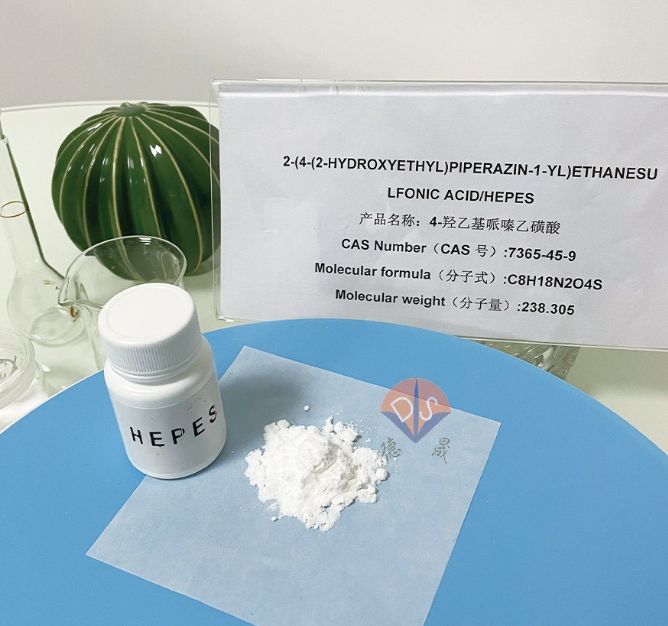Unveiling the Three Core Advantages of HEPES: Promoting the Upgrade of Protein and DNA Transfection Technology
Release time:
2025-07-21
In the fields of molecular biology and cell biology, how to efficiently and safely introduce exogenous proteins or nucleic acids into cells has always been a core concern for researchers. In recent years, HEPES (4-hydroxyethylpiperazine ethanesulfonic acid) has gradually emerged as an important buffer and transfection reagent. This article will analyze the three core advantages of HEPES buffer to support scientific innovation in protein transfection.

HEPES powder
Low cytotoxicity: a safety guarantee for scientific exploration
In traditional protein transfection methods such as liposome transfection and electroporation, there is often high cytotoxicity, which to some extent limits their application in long-term experiments and high-frequency transfection. The emergence of HEPES has brought new hope to researchers. Research has shown that HEPES has a relatively small impact on cell viability. This means that using HEPES for protein transfection can reduce interference with cellular physiological activities, ensuring that cells can maintain a good state after transfection. This characteristic is crucial for experiments that require long-term observation of cell behavior or high-frequency transfection.
Wide compatibility: flexible response to diverse experimental needs
In the complex field of biological research, different experiments often require different culture media to meet specific cell growth needs. HEPES has demonstrated advantages in this regard. Research has found that HEPES can be compatible with various commonly used protein transfection media, such as alpha-MEM, DMEM-F12, RPMI 1640, and Opti MEM. This broad compatibility allows researchers to flexibly select suitable culture media based on experimental needs, thereby optimizing transfection results.
Charge neutralization ability: the key to improving transfection efficiency
In addition to low cytotoxicity and broad compatibility, HEPES also has the ability to neutralize protein charges. This characteristic enables HEPES to reduce the diffusion coefficient of proteins, thereby effectively enhancing protein stability. Other buffer solutions (such as Tris HCl) cannot achieve this characteristic. HEPES enhances transfection efficiency by neutralizing protein charges and promoting protein adsorption on the cell membrane. This mechanism provides a scientific basis for the application of HEPES in protein transfection, highlighting its key role in enhancing protein internalization.
Summary and Outlook
In summary, HEPES is becoming an indispensable tool in the field of biological research due to its low cytotoxicity, wide compatibility, and charge neutralization ability. It not only brings revolutionary progress to protein transfection technology, but also provides new possibilities for other molecular biology experiments such as DNA transfection.

Product packaging
Among numerous HEPES suppliers, Desheng New Materials has won the trust of a large number of researchers with excellent product quality and professional services. Desheng New Materials is always committed to providing high-quality HEPES products for scientific research users, strictly controlling every link in the production process to ensure the purity and stability of the products. Desheng New Materials will continue to focus on the research and production of biological buffering agents, innovate continuously, provide more professional products and services for researchers, and help the development of biological research.
Previous page
Previous page
News
Contact details
Contact number
Address: C8, Guanggu United Science and Technology City, Ezhou City, Hubei Province
Fax:0711-3704 589
Follow us



